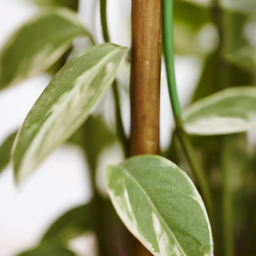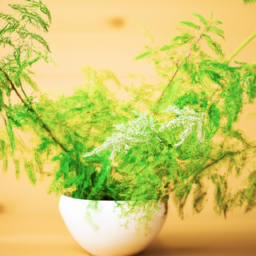
Have you ever stopped to think about the importance of green plants in our world? Green plants play a crucial role in the environment, providing oxygen for us to breathe and serving as the foundation of the food chain. From towering trees in the rainforest to tiny mosses growing on rocks, green plants come in all shapes and sizes. In this blog post, we will explore the fascinating world of green plants and delve into their many benefits and functions. So, grab a cup of tea and join us on this journey through the wonderful world of green plants.
Benefits of Green Plants in Home Decor
Welcome to the wonderful world of green plants! Green plants not only add a touch of nature to your home decor but also offer a wide range of benefits that can improve your overall well-being. In this guide, we will explore the various advantages of incorporating green plants into your living space.
Enhance Indoor Air Quality
One of the most significant benefits of having green plants in your home is their ability to purify the air. Plants absorb carbon dioxide and release oxygen through the process of photosynthesis, which can help improve the air quality in your home. Some plants, such as spider plants and peace lilies, are known for their air-purifying properties and can help remove toxins like formaldehyde and benzene from the air.
In addition to releasing oxygen, plants also release moisture through a process called transpiration. This can help increase humidity levels in your home, which is especially beneficial during the dry winter months when indoor air tends to be drier. By improving air quality and humidity levels, green plants can help reduce respiratory problems, allergies, and fatigue.
Furthermore, studies have shown that having plants in your home can help reduce stress and anxiety levels. The presence of greenery can create a calming and relaxing environment, making it easier to unwind and destress after a long day.
Boost Mental Health and Productivity
Green plants have been found to have a positive impact on mental health and overall well-being. Research has shown that being around plants can help reduce feelings of anxiety and depression, as well as improve concentration and memory. The color green is also associated with feelings of tranquility and relaxation, which can help create a sense of harmony in your living space.
In addition, caring for plants can be a rewarding and fulfilling experience. The act of nurturing and watching your plants grow can provide a sense of accomplishment and purpose, which can boost your mood and self-esteem. Having green plants in your home can also encourage mindfulness and mindfulness practices, as you take the time to water, prune, and care for your plants.
Furthermore, studies have shown that having plants in your workspace can help increase productivity and creativity. The presence of greenery can help reduce mental fatigue and improve focus, making it easier to concentrate on tasks and come up with new ideas. So, consider adding some green plants to your home office or study area to create a more productive and inspiring work environment.
Improve Physical Health
In addition to the mental and emotional benefits, green plants can also have a positive impact on your physical health. Studies have shown that being around plants can help lower blood pressure, reduce the risk of illnesses, and speed up recovery times. The presence of greenery can help create a calming and healing environment, which can aid in the healing process.
Furthermore, plants can help reduce noise levels in your home by absorbing sound waves and creating a barrier between rooms. This can help create a quieter and more peaceful living environment, which is especially beneficial if you live in a noisy urban area or have loud neighbors. So, consider adding some green plants to your bedroom or living room to create a more serene and relaxing atmosphere.
In conclusion, green plants offer a wide range of benefits that can enhance your home decor and improve your overall well-being. From purifying the air and boosting mental health to improving physical health and productivity, green plants are a wonderful addition to any living space. So, why not bring a touch of nature into your home and enjoy all the benefits that green plants have to offer?

Top 5 Easy-to-Grow Green Plants for Beginners
Welcome to the wonderful world of green plants! Whether you’re a seasoned gardener or just starting out, there are plenty of easy-to-grow green plants that can thrive in your home or garden. In this guide, we’ll explore the top 5 green plants that are perfect for beginners. These plants are low-maintenance, resilient, and will bring a touch of nature into your space.
1. Spider Plant
The spider plant, also known as Chlorophytum comosum, is a popular choice for beginners due to its hardy nature and striking appearance. This plant features long, arching leaves that are green with white stripes, giving it a unique and eye-catching look. Spider plants are known for their air-purifying qualities, making them a great addition to any indoor space.
To care for your spider plant, place it in indirect sunlight and water it regularly, allowing the soil to dry out between waterings. Spider plants are also easy to propagate, as they produce “babies” that can be removed and planted in their own pots to grow into new plants.
With proper care, your spider plant will thrive and continue to produce new growth, making it a rewarding and low-maintenance choice for beginners.
2. Pothos
Pothos, or Epipremnum aureum, is another great green plant for beginners. This plant features heart-shaped leaves that can range in color from solid green to variegated with white, yellow, or silver markings. Pothos is known for its trailing growth habit, making it perfect for hanging baskets or as a climbing plant.
To care for your pothos, place it in indirect sunlight and water it when the top inch of soil feels dry to the touch. Pothos is a forgiving plant that can tolerate a range of light conditions, making it ideal for beginners who may not have the greenest thumbs.
With its vibrant foliage and easy care requirements, pothos is a versatile and beautiful green plant that will thrive in your home or garden.
3. Snake Plant
The snake plant, also known as Sansevieria, is a hardy and resilient green plant that is perfect for beginners. This plant features tall, sword-shaped leaves that can be solid green or variegated with yellow or white markings. Snake plants are known for their air-purifying qualities and ability to thrive in low light conditions.
To care for your snake plant, place it in indirect sunlight and water it sparingly, allowing the soil to dry out completely between waterings. Snake plants are drought-tolerant and can survive in low humidity environments, making them a great choice for beginners who may forget to water their plants regularly.
With its striking appearance and easy care requirements, the snake plant is a low-maintenance green plant that will add a touch of elegance to any space.
4. ZZ Plant
The ZZ plant, or Zamioculcas zamiifolia, is a popular choice for beginners due to its ability to thrive in low light and drought conditions. This plant features glossy, dark green leaves that are waxy and durable, making it a resilient and low-maintenance option for indoor spaces.
To care for your ZZ plant, place it in low to moderate indirect light and water it sparingly, allowing the soil to dry out between waterings. ZZ plants are slow-growing and can tolerate neglect, making them an ideal choice for beginners who may not have time to tend to their plants regularly.
With its modern appearance and easy care requirements, the ZZ plant is a stylish and versatile green plant that will thrive in any environment.
5. Peace Lily
The peace lily, or Spathiphyllum, is a beautiful and elegant green plant that is perfect for beginners. This plant features dark green leaves and striking white flowers that bloom throughout the year, adding a touch of beauty and serenity to any space. Peace lilies are known for their air-purifying qualities and ability to thrive in low light conditions.
To care for your peace lily, place it in low to moderate indirect light and water it when the top inch of soil feels dry to the touch. Peace lilies are sensitive to overwatering, so it’s important to allow the soil to dry out between waterings to prevent root rot.
With its graceful appearance and easy care requirements, the peace lily is a peaceful and calming green plant that will bring joy and tranquility to your home or garden.

The Importance of Green Plants in the Ecosystem
Green plants play a crucial role in the ecosystem, providing numerous benefits to both the environment and living organisms. From producing oxygen to serving as food sources for animals, green plants are essential for maintaining the balance of life on Earth.
Oxygen Production
One of the most important roles of green plants in the ecosystem is their ability to produce oxygen through photosynthesis. During this process, plants use sunlight to convert carbon dioxide and water into glucose and oxygen. This oxygen is then released into the atmosphere, providing the essential element for the survival of all aerobic organisms, including humans.
Without green plants, the levels of oxygen in the atmosphere would decrease, leading to serious consequences for the health of the planet and its inhabitants. Therefore, green plants are often referred to as the “lungs of the Earth” due to their vital role in producing the oxygen we breathe.
In addition to producing oxygen, green plants also help to filter pollutants from the air, improving air quality and creating a healthier environment for all living organisms.
Food Sources for Animals
Green plants serve as the primary food source for many animals in the ecosystem. Herbivores, such as deer, rabbits, and cows, rely on plants for their nutrition and energy. These animals consume plant leaves, stems, fruits, and seeds as part of their diet, forming an essential link in the food chain.
Furthermore, green plants provide habitat and shelter for a wide variety of animals, including insects, birds, and mammals. The diverse plant species in an ecosystem create niches for different organisms to thrive, promoting biodiversity and ecological balance.
By supporting the food web and providing resources for animals, green plants play a crucial role in maintaining the stability and health of the ecosystem.
Carbon Sequestration
Green plants play a key role in the carbon cycle by absorbing carbon dioxide from the atmosphere and storing carbon in their tissues. Through photosynthesis, plants capture carbon dioxide and convert it into organic compounds, which are then used for growth and development.
This process helps to reduce the levels of carbon dioxide in the atmosphere, mitigating the effects of climate change and global warming. By sequestering carbon, green plants act as natural carbon sinks, helping to regulate the Earth’s climate and maintain a stable environment for all living organisms.
In addition to carbon sequestration, green plants also play a role in nutrient cycling, releasing essential nutrients back into the soil through decomposition and nutrient uptake. This recycling of nutrients is vital for the health of the ecosystem and the growth of plant and animal populations.
Highlights of this article
Green plants are essential for life on Earth as they play a crucial role in producing oxygen through photosynthesis. Not only do they provide us with the air we breathe, but they also serve as a source of food and shelter for many animals. From towering trees in the rainforest to delicate flowers in a garden, green plants come in all shapes and sizes, showcasing the incredible diversity of the natural world.
In addition to their environmental benefits, green plants also have numerous health benefits for humans. Studies have shown that being surrounded by greenery can reduce stress, improve mood, and boost overall well-being. Whether you have a green thumb or simply enjoy taking a stroll through a park, it’s clear that green plants have a positive impact on both our planet and our personal health.
Here are some questions from our readers:
Q1. What are green plants?
Green plants are organisms that contain chlorophyll and are capable of photosynthesis. They use sunlight to convert carbon dioxide and water into oxygen and glucose, which is their food source.
Q2. Why are green plants important?
Green plants play a crucial role in the ecosystem by producing oxygen, which is essential for all living organisms to survive. They also provide food for animals and humans, as well as contribute to the overall biodiversity of the planet.
Q3. How do green plants get their green color?
Green plants get their green color from a pigment called chlorophyll, which is responsible for absorbing sunlight during photosynthesis. Chlorophyll reflects green light, giving plants their characteristic color.
Q4. What are some examples of green plants?
Some examples of green plants include trees, grass, shrubs, flowers, and vegetables. These plants come in various shapes and sizes and can be found in different environments around the world.
Q5. How can I care for green plants?
To care for green plants, make sure they receive enough sunlight, water, and nutrients. Regularly check the soil moisture and prune any dead or damaged leaves. Different plants have different care requirements, so it’s essential to research specific care instructions for each plant species.
Dr. Olivia Green is a botanist with over two decades of experience in indoor plant cultivation. She holds a Ph.D. in Plant Biology and has dedicated her career to researching plant behavior in controlled environments. Dr. Green is passionate about helping plant enthusiasts master the art of indoor gardening through her extensive knowledge and practical insights.


